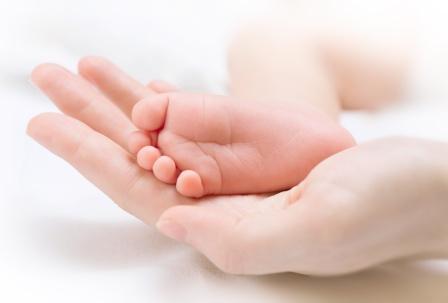One of the scariest things for all parents is the reality of Sudden Infant Death Syndrome (SIDS).
SIDS is the unexplained, unexpected death of a baby who is less than one year old. Because it usually occurs when the infant is sleeping, it is sometimes called “cot death”.
What catapults SIDS into pole position in the realm of fear, is that it is unfortunately the leading cause of death in babies under the age of one year.
What you need to know about SIDS
It is a very real thing. It’s unwise to assume that “it will never happen to me”, as approximately 2 500 babies die from SIDS annually in the USA.
- The primary age group that suffers from SIDS are babies aged between four and six months.
- The syndrome affects more boys than girls.
- SIDS occurs more frequently in cold or inclement weather.
Steps to ensure that your child is safe
1. A safe sleep environment is fundamentally important:
- Make sure nothing covers the baby’s head.
- Use a firm sleep surface, such as a mattress in a safety-approved cot, covered with a fitted sheet.
- Do not use pillows, blankets, sheepskins, or cot-bumpers anywhere in your baby’s sleep area.
- Keep soft objects, toys and loose bedding safely stored away from your baby’s sleep area.
2. Positioning:
Always place your baby on his or her back to sleep, for naps as well as at night.
While some parents are concerned that a baby sleeping on its back is more likely to choke on vomit or spit-up, according to the American Academy of Paediatrics (AAP), lying on the back does not increase this risk. Babies normally cough up or swallow fluids on their own with no choking problems.
Note: Parents of babies who have been diagnosed with Gastroesophageal Reflux Disease (GERD) or certain upper airway problems should consult their doctors about back sleeping. In some cases, stomach sleeping is recommended, but this should always be at the recommendation of the child’s physician.
Make sure that your baby’s airway is not obstructed. This means that your baby should never have his or her chin on his chest. This occurs in car seats, slings, and even while breastfeeding. Keep in mind that your child breathes primarily through his or her nose and this needs to be open and unobstructed.
A baby’s head is heavy. Until your little one displays good neck control, it is important to ensure that it is always well supported.
How can I reduce the risk of SIDS for my child?
- Never smoke during pregnancy or expose your child to smoke thereafter.
- Conform to the required and recommended health care during pregnancy.
- Breastfeed your baby.
- Ensure that your baby sleeps in a room with a comfortable temperature (not exceeding 23 degrees Celsius) during sleep.
- Give your baby plenty of tummy-time when he or she is awake and when someone responsible is watching.
Where should my baby sleep?
Whether parents should co-sleep or not is heavily debated topic. Studies have proven that co-sleeping increases the risk of SIDS. In many cases, infant death associated with co-sleeping is not the result of SIDS, but rather of accidental asphyxiation.
Babies can suffocate if a parent changes sleep positions and accidently blocks the baby’s airway. Infants who sleep face-to-face with a parent are more susceptible to inhaling the carbon dioxide that the parent exhales.
Soft, fluffy bedding can also suffocate an infant. If you do want to co-sleep, Good Night HIGHLY recommends safe co-sleeping options such as a crib extension to the bed.
Remember, safe sleep is healthy sleep!
About the Author: Good Night is a child and baby sleep consultancy that specialises in helping parents with children who struggle to sleep soundly. For more information, visit: www.goodnightbaby.co.za
Latest posts by Contributor (see all)
- Preeclampsia: Signs and treatment - August 29, 2014
- How having a baby changes your marriage and life - August 29, 2014
- Child’s play could predict expectant parents’ capabilities - August 29, 2014
-
No Comments" href="https://all4baby.co.za/uncategorized/1797/spotlight-sudden-infant-death-syndrome-sids/">

Spotlight on Sudden Infant Death Syndrome (SIDS)
-
No Comments" href="https://all4baby.co.za/newborns-0-6-months/newborn-basics/1729/co-sleep-safely-newborn-baby/">

How to co-sleep safely with your newborn baby
-
No Comments" href="https://all4baby.co.za/newborns-0-6-months/newborn-basics/1723/7-sleep-tips-new-moms/">

7 sleep tips for new moms
-
No Comments" href="https://all4baby.co.za/toddlers-1-2-years/health-hygiene-illness-1-2-years/1681/encourage-healthy-eating-habits-toddler-tips/">

Encourage healthy eating habits in your toddler with these tips


 Saving...
Saving...